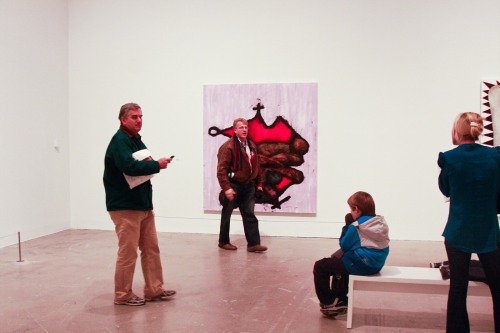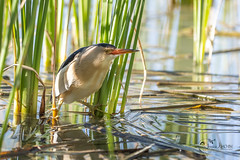Author: Stephen Lehmann, Humanities Bibliographer, Penn Libraries (retired)
The title of our Penn Alumni Travel cruise was “Symphony on the Blue Danube,” and although we heard no symphonies (at least no complete symphonies) and spent more days off than on the Danube (which is famously green), the trip was nothing if not true to its musical theme. Even the boat (“Amadeus Elegant”) was musical, with its three inside decks named after Haydn, Strauss, and Mozart.
The trip’s musical offerings began on our first evening on the boat, docked on the Danube at Budapest, with a delightful on-board performance by the Lugosi Band – clarinet, violin, cimbalom and dancers – playing a variety of Hungarian and Hungarian-Gypsy dances (including the ubiquitous “Csardas” composed by the Italian Vittorio Monti in 1906), as well as some Brahms Hungarian Dances. Four dancers accompanied the band. It was an altogether spirited evening, and the virtuosity of the instrumentalists – not only in their musicianship, but in the rhythmic clapping and slapping of legs and heels – was striking and impressive. Audience participation was encouraged.

Karen Goldstein being a good sport.
The first on-shore concert – an optional add-on – was given on Wednesday, October 2, in the Brahms-Saal of Vienna’s historic Musikverein building, just off the Ringstrasse. The Brahms-Saal, which was inaugurated in 1870 by Clara Schumann, is the smaller of the two second-story halls under the Musikverein’s roof. It seats about 600, and is used mainly for recitals and chamber music. It was restored in 1992-93 to its original splendor: green walls, red pilasters, a lot of gold. (Across a small landing is the Grosser Musikvereinsaal, home to the Vienna Philharmonic, and seating over 2,000.)

The Brahms-Saal of the Musikverein.
The program, performed by a small orchestra dressed in 18th-century costume, consisted largely of bits and pieces of works by Mozart – one movement each from the 40th and 41st Symphonies, two movements from the G-major Violin Concerto, arias from five of the operas, and the two chestnuts, Ronda alla turca and Eine kleine Nachtmusik. The concert concluded with Johann Strauss’s Blue Danube Waltz and Radetzky March. (A few of our group managed to get tickets to the Vienna State Opera House, where they heard Rossini’s Barber of Seville, generating a certain amount of envy among the rest of us.)
The next day (Thursday, October 3), we were treated to a morning concert: the Mozart Ensemble, a string quartet, played a full program of Mozart, Dvorak and Haydn – all, with the exception of the Dvorak (a slow movement from his “American Quartet”), performed in their entirety (Mozart Quartet K. 157 and Divertimento K. 138 and Haydn Quartet op. 9, no. 6). Again the venue, the “Sala Terrena” (“ground-level room”), was remarkable, both historically – it is the oldest concert hall in Vienna, and Mozart played there – and aesthetically, with its 18th-century, fresco-covered vaulted space in the Renaissance Venetian style. As it seats only seventy people, the performances were given in shifts, and we attended in two groups.

Sala Terrena
In the evening, still docked in Vienna, we were treated to another on-board concert, this time a small ensemble (two violins, cello, piano, soprano) performing light Viennese music from the 19th and early 20th centuries – Strauss waltzes and polkas, arias from Strauss and Lehar operettas, pieces by composers like Johann Schrammel and Karl Michael Zierer. Introducing the music was a very tall Viennese, who spoke easily, informatively and in excellent English.
In the dead of night on October 3 the Amadeus Elegant slipped away from Vienna, and we awoke the next morning to find ourselves in the splendid Wachau Valley. After an early stop in medieval Dürnstein (no music), we proceeded to the magnificent early eighteenth century Benedictine abbey at Melk on the Danube’s south bank. There we heard a brief organ concert – the music was not identified, but the consensus was that it was Bach – performed by an 85-year old monk, who had been our guide’s music teacher.

The Biddles and the Blairs enjoying Melk’s organ.
Early the following morning, October 5 (Saturday), we left Austria, sailing past Bavarian villages

and on into Passau.

The walking tour through Passau culminated in the baroque Cathedral of St. Stephen, a late 17th century structure whose organ is the fourth-largest organ and the largest cathedral organ in the world, with almost 18,000 pipes and over 200 registers. Before climbing up to her loft, the organist, Brigitte Furth, explained the workings of the Passau organ and the ways in which she would illustrate its various components and colors. The composers in her program were French (Louis James Alfred Lefébure-Wély, Jean Langlais) and German (Melchior Franck, Pachelbel, Bach). She ended with a piece by Langlais in which she sounded all five of the cathedral’s organs – each set of pipes coming from a different part of the building and ending together in a pew-shaking fortissississimo.
The only other music we heard that day came from the engines of the busses on the ride from Passau to Prague.
On our first day in Prague (Sunday, October 6), our guides took us to the beautiful, five-tier 18th-century Estate Theater, where Mozart’s Don Giovanni (1787) and La Clemenza di Tito (1891) were first performed.

In its foyer we heard a brief concert for woodwind quintet playing arrangements from Mozart operas and a piece by the Czech composer Frantisek Saver Dusek. But the highpoint was an impromptu rendition of the Czech national anthem by Vaclav Bechyni, the theater’s charming guide.

Dana Jolley, Linda Freeman, and, in reflection, Bill Koch
listening to Vaclav Bechyni singing the Czech national anthem.
That evening a number of us went to a performance of Dvorak’s three act water-nymph opera Rusalka at the State Opera, built in 1888 as Prague’s German Theatre. The production was traditional, with English super-titles helpfully provided for those of us who can’t follow the Czech.
We heard our last concert in Prague on Monday morning, October 7, at the Lobkowicz Palace – part of the vast Prague Castle complex – under three enormous chandeliers in a small hall decorated with trompe l’œil columns and niches. The performance, by a string quartet, began with a rendition of Beethoven’s Ode to Joy but came to an abrupt halt when the first violinist suffered a snapped string. He returned quickly, but rather than picking up again with the Beethoven, the musicians proceeded to the Pachelbel Canon and then on through various transcriptions (movements from a Beethoven piano sonata, Dvorak’s New World Symphony, etc.), and concluded with Amazing Grace, Roy Orbison’s Pretty Woman, and some tango.
At the Lobkowicz Palace we were also able to see some of its amazingly rich collection of music manuscripts and first editions, including a score of the Messiah with Mozart’s alterations, the orginal orchestral parts of Beethoven’s Fourth Symphony (dedicated to the seventh Prince Lobkowicz), the first edition of Beethoven’s Eroica Symphony (re-dedicated to Prince Lobkowicz after the original dedicatee, Napoleon, declared himself Emperor) and a copy of Beethoven’s Op. 18 Quartets with corrections in his own hand.
Finally, at our last stop – Cracow, Poland – we attended a private, all-Chopin recital at the city’s music conservatory on October 9 (Wednesday). Some from our group thought the pianist, Paweł Lubica, played harshly, but the acoustics didn’t help: the building had been constructed as an insurance company office, and the concert was held in a two-story former reception room with very hard surfaces.

Lubica played three waltzes and a sampling of other forms favored by Chopin (a Ballade, a Mazurka, a Prelude, a Nocturne, a Fantasie-Impromptu, and a Polonaise). My own favorite was the Nocturne (B major, op. 62, no. 1), and I was reminded of the pianist Rudolf Serkin’s observation that he wouldn’t play the Chopin nocturnes because they were too sad.
Sadness is a good segue to our journey’s end! But sad only because it was such a great trip – the river, the sites, the people, the music. Thank you to everyone for helping to make it such a wonderful experience.

Proud Penn Alumni along on the Danube cruise.
[Penn Alumni Travel is heading back to Vienna and Prague during the spring of 2014. History Professor (and seasoned traveler) Thomas Max Safley will be hosting this tour. If you’re interested in learning more about this trip or any of our 2014 tours, please click here.]
 The goal of the ReThink Your Footprint campaign is to raise the level of conversation about waste management beyond solely recycling and into a broader discussion of source reduction and reuse – resulting in greater diversion of campus waste from the landfill. ReThink Your Footprint culminates during three weeks, November 4 – 22, with an awareness campaign designed to engage the entire Penn Community. In support of our Climate Action Plan’s goals in the area of waste minimization, an assortment of initiatives, events, presentations, and other forms of outreach will take place during this period to share information about environmentally sustainable practices in source reduction, reuse, and recycling.
The goal of the ReThink Your Footprint campaign is to raise the level of conversation about waste management beyond solely recycling and into a broader discussion of source reduction and reuse – resulting in greater diversion of campus waste from the landfill. ReThink Your Footprint culminates during three weeks, November 4 – 22, with an awareness campaign designed to engage the entire Penn Community. In support of our Climate Action Plan’s goals in the area of waste minimization, an assortment of initiatives, events, presentations, and other forms of outreach will take place during this period to share information about environmentally sustainable practices in source reduction, reuse, and recycling.






























